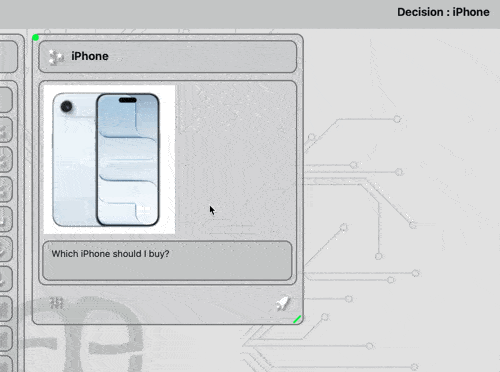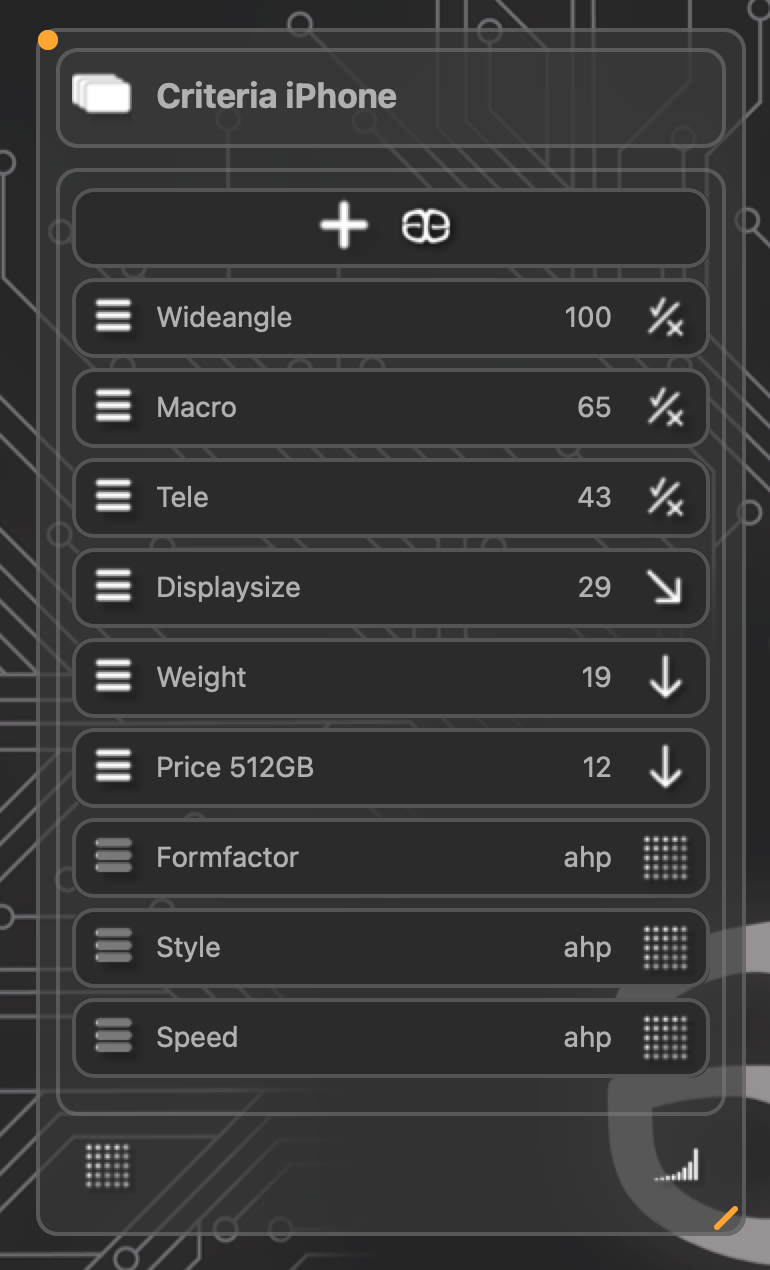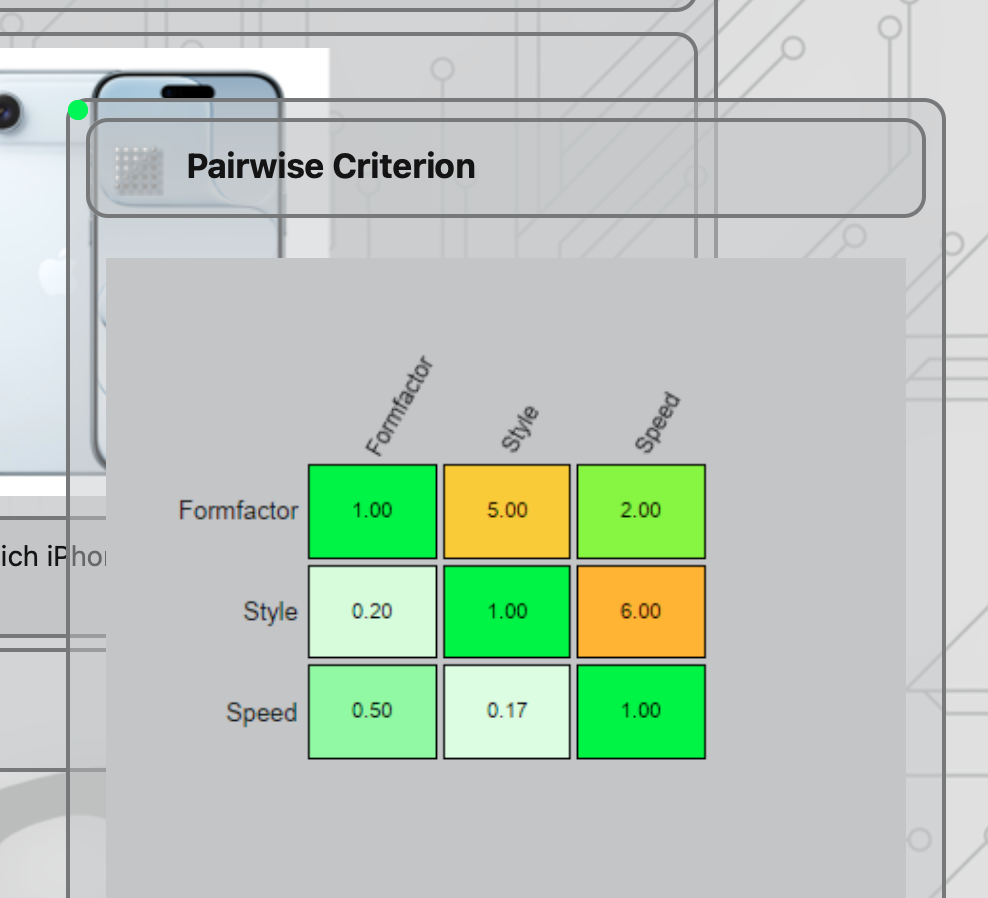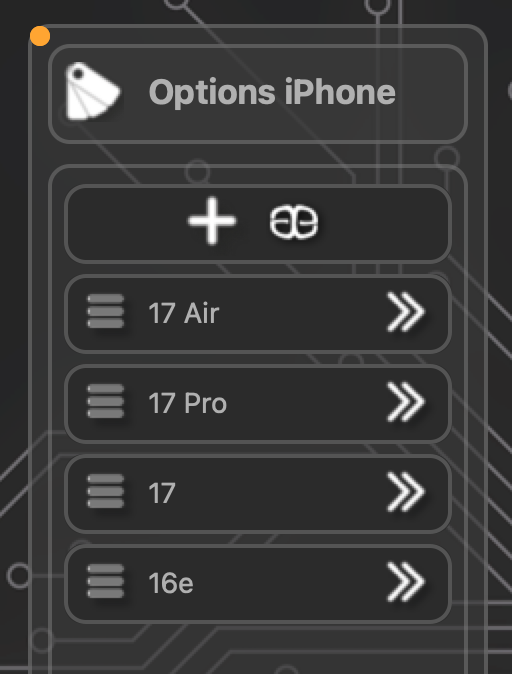The Decision-Making Process for Buying a new iPhone
Apple has once again managed to position its product portfolio in a very special way. The new iPhone Air is designed to appeal to the emotions, while the iPhone 17 is aimed at tech geeks. And everything else lies somewhere in between. What's right for me? I decided this question with PhaenoMind and implemented the result.
OK, it’s not easy. There’s a super-slim, lightweight iPhone Air with a not-so-great camera. And then there’s the iPhone 17 with outstanding camera technology – but it’s a little thicker and heavier.
Then there’s the distinction between the 17 with or without “Pro” and “Plus.” The 16e is still available too. So if you’re looking to buy a new iPhone, the decision isn’t easy.
PhaenoMind is perfect for this problem. After all, we don’t just consider a few measurable criteria, but also the emotional side of the story.
The number of criteria can be as large as you like, but for our test case, we assume that we have the following measurable criteria for selection:


Strictly speaking, the bottom three criteria cannot be measured directly, but can only be determined (qualitatively) by comparing the individual options. We first entered the weightings for the criteria as a matrix. We then compare two criteria with each other and assess which is more important and by how much. This looks like this:

- Formfactor is essential more important as Style
- Formfactor is weakly more important as Speed
- Style is strong more important as Speed
In our example, we compared the following models:
If we now calculate the decision, an even distribution between measurable values and ideal values is automatically set first. The result is clear: the iPhone Air wins.
And now you can clearly see the trick (or sales technique?) behind these products: if the slider between “qualitative” and “quantitative” is moved more towards the measurable criteria, the result only switches to the iPhone 17 Pro at 80% of the rating. And all other products lie in between, regardless of which setting is used.
Above, you can see that price was weighted at only 12%, while wide angle was weighted at 100%. Only when these weightings are changed do the other products move up – and thus become the best choice.

What does this mean?
Does Apple assume that price plays only a minor role for most buyers? Apple believes that qualitative, i.e., emotionally biased criteria can play a greater role.
Current sales figures suggest that this calculation may not (yet) be working out. However, this has often been the case in Apple's history. It remains to be seen how buyer behavior will develop. Nothing is more exciting than economics.
For me personally, the focus is less on the emotional side and more on the technical aspects. That's why I chose the iPhone 17 Pro. But because we all use both sides of the assessment, it's a balancing act every time. And it's always difficult to maintain that balance and not “fall” into the “wrong” decision.
Our recommendation
Register with us and download PhænoMind. Also download the phone decision above. Once you have installed PhænoMind, you can use our sample directly. Although you can't change the criteria or options, you can change the ratings and priorities.
And the best thing is: the decision is saved as a PDF and you can look at it again later at any time. You can also explain to yourself and others how you came to your decision.